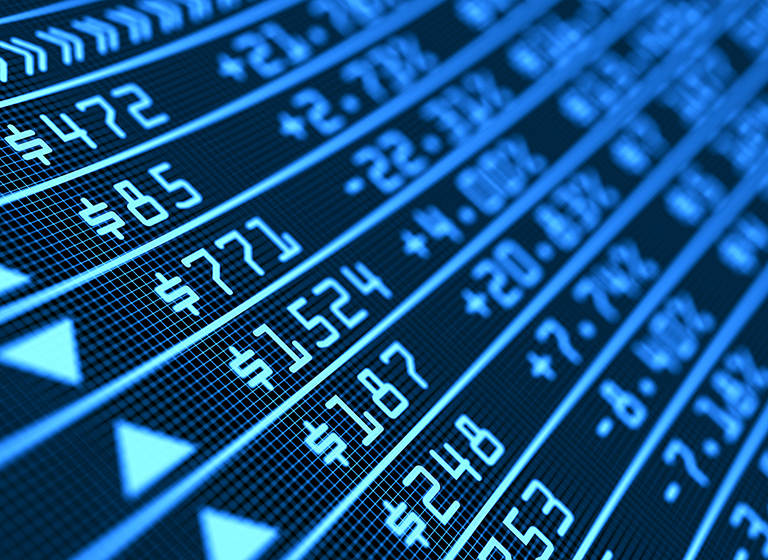Decoding the Daily Dance of Margin Debt: A Deep Dive into China's Stock Market Financing
Meta Description: Unraveling the complexities of margin debt in China's stock market. Expert analysis of daily financing balances, trends, implications for investors, and future outlook. Includes FAQs and insights for both seasoned and novice investors. Keywords: Margin Debt, China Stock Market, Financing Balances, Shanghai Stock Exchange, Shenzhen Stock Exchange, Investment Strategy, Risk Management
This isn't just another dry market report; it's a behind-the-scenes look at the pulsating heart of China's stock market financing – margin debt. Think of it as the stock market's heartbeat: a rhythmic ebb and flow that reflects investor sentiment, market confidence, and the overall health of the economy. We’ll peel back the layers of seemingly complex data, revealing the story behind the numbers and providing actionable insights you can use. Forget jargon-filled reports; this is your guide to understanding the daily dance of margin debt, explaining the implications for your investment strategy, and offering a glimpse into what the future might hold. Buckle up, because we're about to embark on a journey into the dynamic world of Chinese stock market financing – a world where billions of yuan change hands daily, shaped by the intricate interplay of investor confidence and market forces. We'll go beyond the headlines, exploring the real-world impacts and offering a practical, accessible understanding that will give you a significant edge. Ready to dive in? Let's get started!
Margin Debt in China: A Deep Dive into the Numbers
As of December 16th, the Shanghai Stock Exchange (SSE) reported a financing balance of ¥9568.69 billion, showing a decrease of ¥4.31 billion from the previous trading day. Meanwhile, the Shenzhen Stock Exchange (SZSE) saw a financing balance of ¥9134.71 billion, a modest increase of ¥7.38 billion. Combined, both exchanges reported a total financing balance of ¥18703.4 billion, a net increase of ¥3.07 billion compared to the previous day's figures. But what does this seemingly small daily fluctuation really mean? This is where the real story begins.
These seemingly small numbers represent monumental shifts in investor behavior and market sentiment. A slight dip in one exchange, coupled with a rise in another, suggests a complex interplay of factors – perhaps a sectoral shift in investor focus, a reaction to specific news events, or even a subtle change in overall risk appetite. Analyzing these daily changes over time reveals crucial trends, allowing investors to anticipate potential market movements and adjust their strategies accordingly.
Let's unpack this further:
- Daily Fluctuations: The small daily changes in margin debt aren't necessarily indicators of impending doom or explosive growth. They're more like the ripples in a pond – subtle movements that reflect the cumulative effect of many individual investment decisions. Consistent monitoring is key to understanding the bigger picture.
- SSE vs. SZSE: The differing trends between the SSE and SZSE highlight the importance of analyzing the individual exchanges. This is because the SSE and SZSE have different industry compositions and investor profiles. Understanding these differences is vital for making informed investment decisions.
- Overall Trend Analysis: Looking at the data over a longer period (weeks, months, or even years) reveals broader trends and patterns. This long-term perspective offers much more significant insights than simply focusing on daily changes.
Understanding Margin Debt: The Mechanics
Margin debt, simply put, is money borrowed from a brokerage to invest in the stock market. It’s a double-edged sword: it amplifies potential profits, but equally amplifies potential losses. Think of it like using leverage – a powerful tool, but one that demands caution and a thorough understanding of its risks. In China, margin trading is a significant component of the stock market's activity, influencing liquidity, volatility, and overall market dynamics.
The Impact of Margin Debt on Market Volatility
Margin debt's influence on market volatility is a complex issue. High levels of margin debt can exacerbate market swings. When the market declines, margin calls – demands from brokers for additional funds to cover losses – can trigger forced selling, leading to further price drops in a vicious cycle. Conversely, rising margin debt can suggest increased investor confidence, potentially fueling market rallies. However, this confidence can quickly turn into fear if the market takes an unexpected downturn.
Think of it like this: Imagine a house of cards. Each card represents an investor using margin debt. As long as the market is rising, the house stands tall. But if the market falls, even slightly, the house can collapse, leading to a domino effect of margin calls and forced selling.
Risk Management and Margin Debt: A Balancing Act
The key to successfully leveraging margin debt lies in prudent risk management. This involves a careful assessment of one's risk tolerance, diversification of investments, and setting clear stop-loss orders to limit potential losses. Ignoring these precautions can lead to significant financial setbacks.
Here’s a table summarizing key risk management considerations:
| Risk Factor | Mitigation Strategy |
|---|---|
| Market Volatility | Diversify investments across different sectors and asset classes |
| Margin Calls | Maintain sufficient capital reserves and set appropriate stop-loss orders |
| Leverage Risk | Avoid excessive leverage and only borrow what you can comfortably afford to lose |
| Information Asymmetry | Conduct thorough due diligence before investing and stay informed about market trends |
Case Studies: Examining Past Margin Debt Trends
Analyzing historical data reveals valuable insights into the relationship between margin debt and market performance. For example, periods of rapid margin debt growth have often been followed by market corrections. Examining these historical patterns can help inform future investment decisions. However, it's crucial to remember that past performance is not necessarily indicative of future results. Each market cycle is unique, shaped by a confluence of economic, political, and social factors.
Future Outlook: What Lies Ahead for Margin Debt in China?
Predicting the future trajectory of margin debt is challenging, but several factors suggest a complex and potentially volatile landscape. Regulatory changes, economic growth, and global market conditions will all play a role in shaping future trends. Keeping a close eye on these factors is crucial for navigating the ever-evolving world of Chinese stock market financing.
Frequently Asked Questions (FAQs)
Q1: What is margin debt, and how does it work?
A1: Margin debt is borrowing money from a broker to invest in the stock market, essentially leveraging your investment. The broker holds your assets as collateral. Profits and losses are amplified.
Q2: Is margin debt risky?
A2: Yes, margin debt significantly increases risk. If the market moves against you, you could face margin calls, requiring you to deposit more funds or risk liquidation of your assets.
Q3: How can I manage the risks associated with margin debt?
A3: Implement a robust risk management strategy. This includes diversification, setting stop-loss orders, and only using leverage you can comfortably afford to lose.
Q4: How do daily fluctuations in margin debt affect the market?
A4: Daily changes reflect investor sentiment and market dynamics. Sharp increases might signal overconfidence, while decreases could indicate caution or forced selling.
Q5: Where can I find reliable data on Chinese margin debt?
A5: Major financial news outlets, the Shanghai and Shenzhen Stock Exchanges, and reputable financial data providers offer reliable data on margin debt.
Q6: Should I use margin debt?
A6: Only use margin debt if you have a thorough understanding of the risks involved and a well-defined investment strategy with built-in risk management mechanisms. It's not suitable for all investors.
Conclusion: Navigating the Dynamic Landscape of Chinese Margin Debt
Understanding margin debt is crucial for navigating the dynamic world of the Chinese stock market. While it offers the potential for amplified returns, it comes with significant risks. By carefully monitoring daily fluctuations, analyzing long-term trends, and implementing sound risk management strategies, investors can leverage this powerful tool while mitigating potential losses. Remember, knowledge is power, and a thorough understanding of margin debt is your key to making informed investment decisions and achieving your financial goals in the exciting, yet unpredictable, Chinese stock market. Stay informed, stay vigilant, and happy investing!



